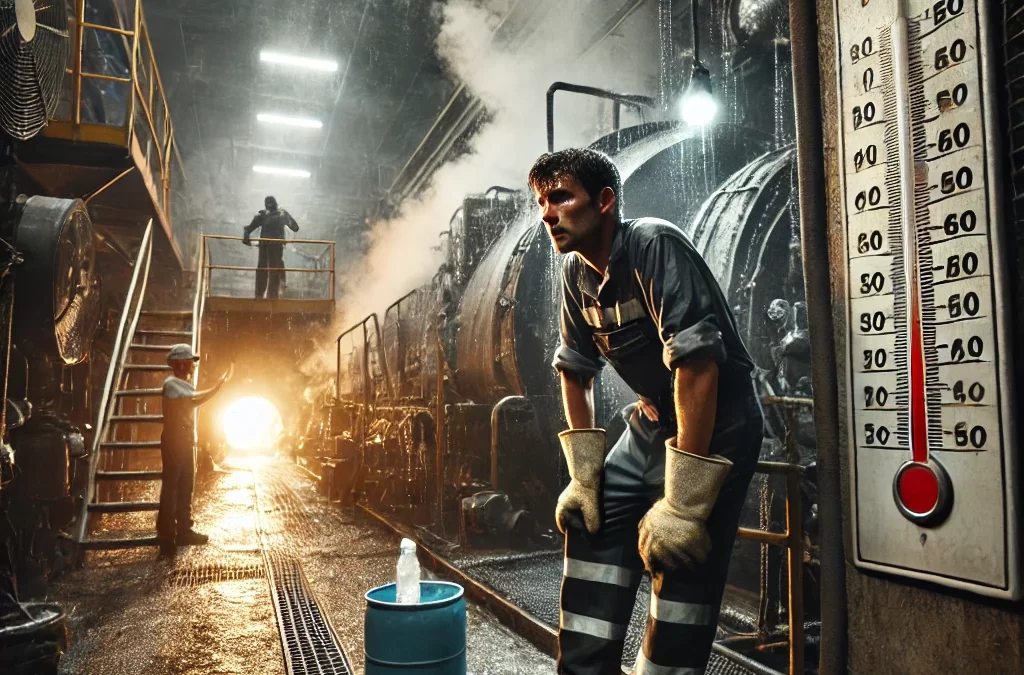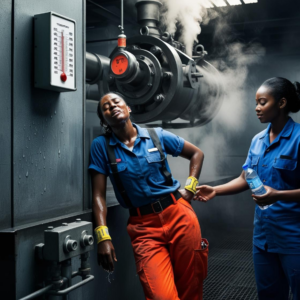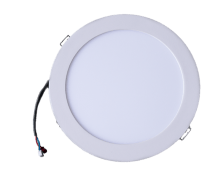Last Updated on February 21, 2025 by Solar Whiz
Heat stress is becoming an increasingly common problem in workplaces across Australia and around the globe. While many focus on the physical dangers of working in extreme heat, there’s a hidden threat that is often overlooked: its impact on mental health. Prolonged exposure to excessive heat can affect concentration, mood, and overall well-being, leading to a dangerous combination of physical exhaustion and mental strain.
Dr. Ken C. Shawa, a senior economist at the International Labor Organization (ILO), said, “Heat stress is a silent killer. Many people are not aware that they are being affected by heat.”
In this article, we’ll explore how heat stress affects workers’ mental health and discuss the measures businesses can take to protect their teams.
For more insight on this critical issue, check out the ILO podcast on heat stress at work here.
1. General or Global Heat Stress at Work
Heat stress is not just an Australian issue—it’s a global problem. As temperatures rise worldwide, workers in many industries are increasingly exposed to unsafe working conditions. Outdoor workers, such as those in agriculture and construction, face the brunt of this, but even indoor environments are not immune.
In industries like manufacturing, warehouses, and food processing, heat stress can lead to reduced productivity and an increase in accidents. More importantly, it can take a heavy toll on mental health. The constant strain of working in a hot environment can cause irritability, anxiety, and fatigue, making it harder for workers to perform at their best.
2. Heat Stress at Work in Australia
Australia’s harsh climate presents unique challenges for workers. With temperatures frequently exceeding 35°C in many regions, heat stress is a growing concern, especially during the summer months. Industries like construction, agriculture, and warehousing are particularly vulnerable to the risks of heat stress.
The Australian government has put measures in place to address heat stress, but there is still much more to be done. Employers must take responsibility for providing safe working conditions and ensuring that workers are not exposed to extreme heat for prolonged periods.
3. Excessive Heat and Heat Stress
Heat stress occurs when the body is unable to cool itself effectively in high temperatures. This can lead to dehydration, heat exhaustion, and heat stroke if left unchecked. But the effects go beyond just the physical. The psychological toll of working in extreme heat can cause mental fatigue, reduced focus, and even depression.
Mental health issues caused by heat stress are often invisible, but they can be just as damaging as physical symptoms. Workers may struggle with mood swings, irritability, or a lack of motivation, which can lead to poor decision-making and a higher likelihood of accidents.
Although outdoor workers exposed to direct sunlight face the highest risk of heat stress, indoor workers—particularly those in poorly ventilated areas or working near heat-producing machinery— are not spared either, as pointed out by Dr Shawa.
4. Impact of Heat Stress on Worker Safety and Health
The dangers of heat stress extend far beyond the discomfort of working in hot conditions. Heat stress can increase the likelihood of workplace accidents, as workers’ reactions slow down, and their ability to focus decreases.
Mental health plays a huge role in workplace safety. When workers are mentally fatigued, they are more likely to make mistakes or overlook safety protocols, putting themselves and others at risk.
Dr. Ken C. Shawa explains, “When one feels heated up, one may feel restless and anxious, and react to things more easily.” This psychological toll, combined with physical fatigue, can significantly reduce productivity and overall worker wellbeing.
Moreover, chronic exposure to high temperatures can lead to more serious mental health issues. “This is normal. But if you are in this pressure cooker long enough, over time, it can lead to more prominent mental health issues like excessive ruminations and even depression,” Dr. Shawa adds.
5. Workplace Action on Heat Stress
Employers play a crucial role in managing heat stress and its effects on workers’ mental health. Here are some key steps that can help mitigate the risks:
5.1. Workplace-Level Risk Assessment
The first step in addressing heat stress is identifying the risks. Conducting a thorough risk assessment allows businesses to pinpoint areas where heat stress is most likely to occur, and to implement measures to reduce exposure.
5.2. Heat Stress Prevention and Control Practices
It’s important to create a cooling strategy for workers, especially in high-heat environments. This could include installing shade structures, providing cooling breaks, and using mechanical ventilation systems like solar roof ventilators to help reduce indoor temperatures.
5.3. Education and Awareness on Heat Stress
Training workers to recognise the signs of heat stress is essential. Education about hydration, the importance of regular breaks, and how to recognise early symptoms of heat-related illnesses can make a big difference.
5.4. Monitoring Worker Health
Regular health checks for heat-related illnesses, especially during heatwaves, are crucial. This might involve checking temperature and humidity levels in the workplace or using wearables to monitor workers’ health in real-time.
5.5. The Role of Workplaces in Mitigating Climate Change
Climate change is intensifying heat stress, making it even more important for workplaces to adopt sustainable practices. Investing in energy-efficient technologies, such as solar roof ventilators, can help reduce the impact of rising temperatures in the workplace.
5.6. Addressing Vulnerable Worker Groups
Certain groups of workers, such as the elderly, pregnant women, and those with pre-existing health conditions, are more vulnerable to the effects of heat stress. Employers must implement tailored solutions to protect these workers from the dangers of extreme heat.
6. Why Solar Whiz is the Solution to Workplace Heat
One of the most effective solutions to managing heat stress in the workplace is using a solar roof ventilator like Solar Whiz. These energy-efficient ventilation systems focus on reducing excessive heat build-up inside buildings by extracting hot, trapped air and introducing fresh air from outside. This process helps create a more manageable indoor temperature by preventing heat from accumulating to extreme levels. However, it’s essential to note that Solar Whiz is not an air conditioner and does not cool the air below the ambient temperature. On particularly hot days, businesses should consider additional strategies to ensure optimal comfort and safety for workers.
6.1. Introduction to Solar Whiz
Solar Whiz is a solar-powered ventilation system designed to reduce indoor temperatures by providing continuous airflow. Its effectiveness in hot environments makes it an ideal solution for workplaces prone to heat stress.
6.2. How Solar Whiz Helps Manage Workplace Heat
Solar Whiz uses solar energy to extract built-up heat, reducing reliance on air conditioning and energy costs. Its cooling effect is a byproduct of heat removal, helping manage workplace temperatures and lower heat stress risks.
6.3. Benefits of Solar Whiz in Reducing Heat Stress
Solar Whiz helps lower indoor temperatures, reducing the risk of heat stress and improving mental and physical health outcomes for workers. With its easy installation and minimal maintenance, it’s an efficient solution for any workplace.
6.4. Real-Life Examples of Solar Whiz Installations
Many Australian businesses have already seen the benefits of installing Solar Whiz, from improved worker productivity to a reduction in heat-related illnesses. By investing in Solar Whiz, companies can take a proactive step in protecting their workforce and ensuring a safer, more comfortable working environment.
Check out these Solar Whiz case studies to see how businesses have successfully implemented Solar Whiz and improved both their working conditions and bottom lines.
7. Economic Costs of Heat Stress
Heat stress doesn’t just affect workers’ well-being—it also impacts businesses financially. Poor health resulting from heat stress can lead to absenteeism, reduced productivity, and an increased risk of workplace accidents. These factors can create significant financial fallout for businesses, from lost work hours to potential liability issues. By addressing heat stress proactively, businesses can mitigate these risks and support a healthier, more productive workforce.
8. Emerging Technologies
Alongside traditional solutions like air conditioning, innovative technologies are emerging to help businesses combat heat stress in more sustainable ways. In addition to Solar Whiz, other technologies such as cool roofs, high-efficiency insulation, and smart climate control systems are becoming more popular in reducing indoor temperatures and minimising the impact of heat on workers.
These technologies provide businesses with a broader toolkit to manage heat stress while keeping energy costs low and reducing their carbon footprint. Combining these solutions with products like Solar Whiz can create a comprehensive strategy for tackling heat stress and improving workplace conditions in the long run.
Conclusion
Heat stress is a silent killer that affects both the physical and mental health of workers. As temperatures continue to rise, it’s essential for employers to take action to protect their teams. By implementing workplace strategies to manage heat stress and investing in solutions like Solar Whiz, businesses can create a safer, healthier environment for their workers.
For more information on how heat stress impacts workers, check out the ILO podcast here.






